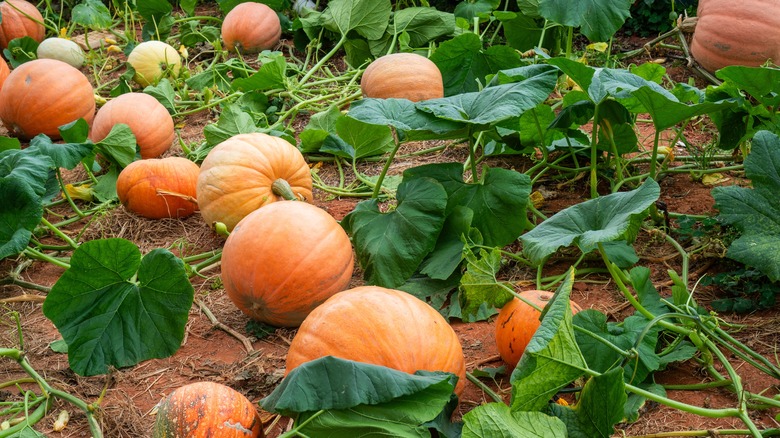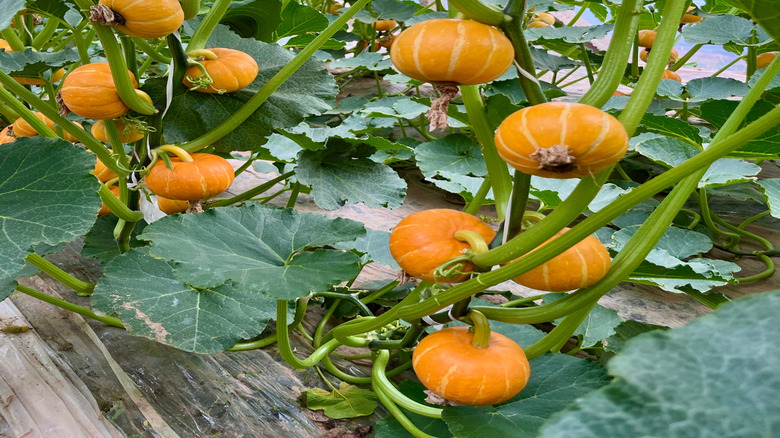How To Train Pumpkin Vines For Strong & Stable Plants
If you've never grown pumpkins before, you may not know that they take up an enormous amount of garden real estate. Pumpkin-growing can require up to 100 square feet, and larger pumpkins will need even more square footage. The vines alone are up to 8 feet long, and each plant will spread 8 to 15 feet. To boot, pumpkin plants need significant space between them — up to 5 feet apart with up to 8 feet between rows. As you can imagine, managing space and vines is important to a successful pumpkin crop. You'll want to learn how to tell if your pumpkins are overcrowded, but before things get to that point, you can learn to train vines so they support healthy growth and take up less space.
First, some vine basics. Pumpkin plants actually have three types of vines. The main stem emerging from the plant's base is the primary vine. Branching off from the primary vine are secondary vines, and from those secondary vines, tertiary vines grow. Of the two types of vines, twining and clinging, pumpkins have twining vines, meaning they wrap tendrils around support structures. Vines are among the fastest-growing plants because they don't have to expend energy into supporting an upright plant, so they put it into relentless growth. Don't let an inability to manage vines make it onto the list of avoidable mistakes everyone makes when growing pumpkins.
How to save space and support healthy growth by training vines
You have options for training your vines. One is an on-ground method that is suited for larger pumpkins. It keeps the vines in order, stabilizes the plant, and improves water delivery to it. The other is a vertical growing method in which small-species pumpkin vines are trained to a structure, such as a trellis.
The trick with the on-ground method is to identify several nodes (also called axils) on each plant where leaf stems are attached to the vine and mound soil onto these nodes so they put roots down in the soil. The roots established at these nodes surpass the main root system's ability to provide the pumpkin with water. You can bury vines entirely in 2-inch deep trenches covered with up to 2 inches of soil. Pruning off tertiary vines will encourage pumpkin growth.
The vertical method is for smaller pumpkins, such as 'Jack-Be-Little', 'Baby Bear', 'Baby Boo', and 'Spooktacular'. Lots of DIY and store-bought options are available to support the plant's vertical growth — tomato cages, trellises, single or multiple stakes, and many other possibilities. The support should be at least 6 feet high and of durable material. Place the support next to or around the plant site. As the vines grow, place them on the support to encourage them to twine up the structure. You can use soft ties or clips to hold vines in place on the support. As the pumpkin plant begins to fruit, even small pumpkins can fall off the vine. Some gardeners add little shelves to the support or provide slings or hammocks for the fruits. Check the plants daily to adjust their training as needed and monitor for pests. Follow these planting tips to have a beautiful pumpkin trellis.

